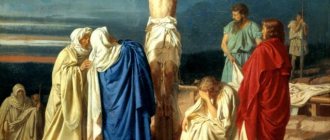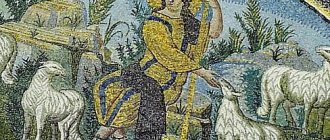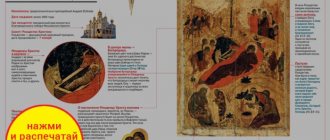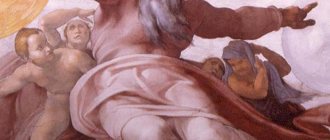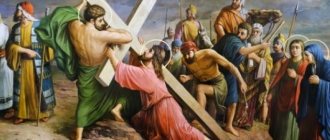Christianity is a world religion that ranks first in the number of its followers. It arose in Palestine in the 1st century. n. e. This is the period when the state was conquered by the Roman Empire.
The creator of Christianity is the Lord Jesus Christ, a man whose homeland is considered to be the city of Nazareth. Believers are convinced that this person is the Son of God, who is spoken of in the Old Testament as the Savior of the world.
For most Christians, the question of the existence of Jesus Christ is quite important. After all, this personality for them is the basis of Faith. And only then do people consider His teachings, works and religious doctrines. Faith in Jesus Christ unites people. Even those who belong to various Christian denominations, churches and movements.
Having evidence of the existence of Jesus Christ is of great importance to believers. It is important for them to know that such a person lived on earth, died for human sins and was resurrected, ascending to Heaven. This gives confidence that Jesus Christ will definitely come and judge both the living and the dead.
Modern researchers can neither refute nor confirm the Divinity of Jesus. However, today we can say that science has reliable data about the existence of this personality. Most knowledge about specific events that occurred in the life of Jesus is found in Christian sources. The Gospels, books written by the first followers of this faith, also give us a lot of information. They contain the life story of Jesus Christ, biographical information about him, as well as information about the death of this person. Such narratives are included in the text of the New Testament. This is the second part of the Bible, which is the Holy Scripture for Christians. Today, even non-believing scientists trust these works.
To confirm the existence of Jesus Christ, it is necessary to find evidence of the existence of this person in the following areas:
- archeology;
- early non-Christian writings;
- early Christian writings;
- early New Testament manuscripts;
- historical influence of this religious trend.
Manuscript finds
Is there evidence of the existence of Jesus Christ? Several sources at the disposal of modern science testify in favor of the historicity of this person and in confirmation of a number of information contained in the Gospel.
For example, archaeologists have obtained data confirming the fact that the Gospel appeared not in the second, but in the first century. This was indicated by papyrus lists of books included in the New Testament. They were discovered in Egypt at the beginning of the 20th century, during archaeological excavations.
The oldest manuscripts discovered date back to the first half of the 2nd and 3rd centuries. Of course, it took some time for Christianity to emerge on the banks of the Nile. That is why the creation of directly New Testament manuscripts must be attributed to the 2nd half of the 1st century. This period fully corresponds to their content and church dating.
The earliest found passage of the New Testament, the authenticity of which no one has any doubt, is a small papyrus fragment. It contains only a few verses from the Gospel of John. Experts believe that this text was created in 125-130. in Egypt, but it took quite a long time for it to reach the small provincial town where it was discovered along with Christianity.
These finds became a significant basis for believers to perceive the modern New Testament texts from the Gospel as the work of the apostles - companions and disciples of the Lord.
But this is not all the evidence obtained by archaeologists for the existence of Jesus Christ. The find discovered near Qumran, located on the shores of the Dead Sea, in 1947 acquired enormous significance for the entire history of religion. Here scientists discovered ancient scrolls that contained biblical Old Testament and other texts. A large number of other indirect historical evidence of the existence of Jesus Christ have been discovered. They were manuscripts of books containing the Old Testament. Some of them corresponded dozens of times. The ancient texts turned out to be close to the modern translation of the 1st part of the Bible. During excavations at Qumran, other finds were discovered. They were texts, thanks to which researchers obtained additional information about the conduct of religious life by Jewish society in the period from the middle of the 2nd century BC. e. and until the 60s of the 1st century AD. e. Such data fully confirmed many of the facts reflected in the New Testament.
Scientists suggest that the Qumranites hid their scrolls in caves. By this they wanted to protect the manuscripts from destruction by the Romans during the suppression of the Jewish uprising.
Scientists have established the fact that the settlements located on the coast of the Dead Sea were destroyed in 68 AD. e. That is why the biblical manuscripts of Qumran refute the idea that the New Testament was created at a later time. At the same time, the assumption that the Gospel was written before 70 AD began to look more convincing. e., and the books of the second part of the Bible - until 85 AD. e. (except for “Revelation,” which was published at the end of the 1st century AD).
New in blogs
Chapter 5. Non-biblical sources
We have seen that the gospel accounts are completely unreliable as history and cannot be used as proof that Jesus Christ ever existed. Now let's see if there is any non-biblical evidence from historians who lived at the time of the supposed amazing events, namely: the birth of a virgin "son of God", who was incredibly famous as a great teacher and miracle worker, miraculously healing and feeding multitudes, walking on water and the one who raises the dead; transformed on the mountain into the bright sun; whose crucifixion was accompanied by a great earthquake, an eclipse of the sun and the rising from the graves of many "saints", and who was himself raised from the dead. Of these supposed events, Eusebius says:
“Because of His ability to work miracles, the divinity of our Lord and Savior Jesus Christ became the subject of excited conversation throughout the whole earth, and attracted a huge number of people from other countries, very distant from Judea...”109
Surely such extraordinary events, known far and wide, were described by one or more competent historians of the time?
As has already been said, the centuries following the beginning of the Christian era, the times of Tiberius and Augustus, were, in fact, the best documented in history, as is recognized even by Christian apologists.110
For example, the Roman historian under Augustus, Livy (59 BC-17 AD), alone compiled 142 volumes, more than a hundred of which were subsequently destroyed by Christian forgers trying to cover their tracks.
However, despite this fact, there are basically no non-biblical references to the historical Jesus by any known historian of the time during and after Jesus' supposed appearance
.
Walker writes: "Not a single literary figure of the time mentions him in his writings."
The eminent Jewish Hellenistic historian and philosopher Philo (20 BC-50 AD), who lived in the supposed time of Jesus, was quiet on the subject of the great Jewish miracle worker and rabble rouser who appeased the wrath of Rome and Judea.
Yet Jesus and his followers are not mentioned by any of the 40 or so other historians who wrote during the 1st and 2nd centuries AD, including Plutarch, a Roman biographer who lived at the same time (46-120 AD). BC) and in the same place (where, according to statements, there were many Christians), who left no mention of them, or of their founder, or of their religion.
McClintock and Strong's Cyclopedia of Theological Literature says:
“After these authors there remained a sufficient number of works from which one can compile a whole library. And yet, in this mass of Jewish and pagan literature, except for two spurious passages in the works of a Jewish author and two controversial passages in the works of Roman writers, there is no mention of Jesus Christ.”111
Jewish historian Josephus (37 – 95 AD)
Josephus is the most famous Jewish historian, especially because he wrote during the 1st century. His father, Matthias, was a respected and learned member of a family of priests and lived in Jerusalem at the same time as Pilate.
Of course, he would have told his historian son about the bizarre and extraordinary events depicted in the gospels, even if they had happened years earlier. Joseph was assigned to Galilee during the period of the Jewish wars and was in Rome at the same time when Paul himself and his community of Christians were supposed to be subject to the wrath of the authorities. However, in all of Josephus's works, which form a multi-volume collection detailing the great events of many centuries of history, there is NO mention of Paul or the Christians, and there are only two brief paragraphs that (presumably) refer to Jesus. Although much has been made of these references, they have been dismissed by scholars as well as Christian apologists as bogus, just like the references to John the Baptist and James, "the brother of Jesus."
No less an authority in this area - Bishop Warburton of Gloucester (1698-1779) called the insertion into Joseph regarding Jesus “a commonplace and very stupid forgery.”112
Of Joseph and this foolish forgery Wheeless says:
“The fact is that, with the exception of this irrelevant forged passage in section 3, Josephus makes not the slightest mention of his fellow countryman, the miracle worker Jesus Christ, although there are accounts of other men named Yehoshua or Jesus noted by him, nor does he mentions none of his amazing wonders…. The first mention of this passage and its text is in the History of the Church by Eusebius, a “very dishonest author” of the 4th century AD...[Catholic Encyclopedia]... The above quoted passage was unknown to Origen and earlier patriotic writers.”113
Attorney Wheeless and Minister Taylor agree with many others, including such Christian apologists as Dr. Lardner, that it was Eusebius who forged the passage in Josephus. In any case, these passages in Josephus are falsified, leaving his other significant works without the story of Jesus Christ.
Waite asks:
“... Why did Joseph not make any mention of Jesus being called Christ?... It is true that Joseph was not a contemporary of Jesus if he was crucified during the period usually supposed. But during Joseph's reign of Galilee, the country must have been full of the traditions of the crucified Galilean. Several generations have passed, and is it possible that the Glory of Jesus, now widespread in other lands, was not so significant in Galilee? Paul was a contemporary of Joseph, and in his travels (if one can rely at all on the Acts of the Apostles) he must have crossed the path of the Jewish priest and miracle worker more than once.”114
But Joseph remains silent about Christ and Christianity.
Pliny the Younger (62 -113 AD)
One of the tiny number of references taken by Christians as evidence of the existence of Jesus is a letter to Trajan, possibly written by the Roman historian Pliny the Younger. However, in this letter there is only one word that is applicable - “Christians”, and this is what proves that it is fake, like the document as a whole. This assumption was made on the basis of Pliny's account of the Essenes, and if the letter is genuine, then the original word was "Essenes", later changed to "Christians" in one of the many "revisions" of the works of ancient authors by Christian forgers.
Tacitus (55-120 AD)
Like Pliny, the historian Tacitus was not a contemporary of Jesus. He was born 20 years after the supposed death of the "Savior", so if there were any passages in his work addressed to Christ or his closest followers, they would have been secondary and appeared long after the supposed events. This fact, however, does not matter, because the implied passage in Tacitus regarding the persecuted Christians under Nero is also an insertion and a forgery, as already noted. Neither the zealous defender of the faith Eusebius, nor anyone else ever mentions the passage of Tacitus until the 15th century AD.
Taylor writes:
“This passage, which would have served the purposes of Christian quotation better than any other of all the letters of Tacitus, or of any pagan author in general, is not indicated by any of the Church Fathers... He is not listed by Tertullian, although he read and quoted many of the works of Tacitus…. There is no hint or trace of the existence of Jesus in the world before the 15th century.”115
Suetonius (69-140)
Christian defenders cite as evidence of the historicity of their messenger of God a tiny and most likely inserted passage from the Roman historian Suetonius, addressed to someone named Khrestus or Khrestos in Rome. It is clear that the Christ of the Gospel could not have been in Rome, so this passage does not apply to him.
Moreover, even if, according to some, there was a Roman with that name, the title Khrestus or Khrestos, meaning “good” and “useful,” was most often used, among others, for freed slaves and various gods.
Regarding these "historical references" Taylor says:
“But even if they are genuine and derived from earlier sources, they do not lead us to a period earlier than that in which the legend of the gospel took shape and testify only to the legend of Jesus, and not to his historicity.”
In any case, insufficient and short references to the man who turned the world upside down can hardly serve as proof of his existence, and it is absurd that the historicity of the Christian religion should be based on them.
During the period of the supposed life of Christ there were indeed many relatively reliable historians who generally did not embellish their works with a large number of myths, did not give them a cultural slant, and did not fall into religious ecstasy. Where is their evidence of the amazing events recorded in the gospels? Mad writes about this:
“This fact has constantly caused surprise on the part of historians - researchers of the origins of Christianity, that there is not a single word coming from the pen of at least one pagan author who lived in the first century of our era, which could in one way or another be attributed to the amazing history, told by the author of the Gospel. The very existence of Jesus is unknown.”116
The silence of these historians is, in fact, the most powerful evidence against the historicizers.
Links to the Talmud and other Jewish sources
One might think that there would be at least some reference to the “historical” Jesus in the Jewish texts of the Jews, who were famous for their record-keeping. However, this is not found among them, despite all the crazy references to “Jesus ben Pandir”, who is supposed to have lived during the 1st century BC, or to other Jesuses mentioned in Jewish literature.
Unfortunately, these characters do not fit either the story or the time period of the life of the evangelical Jesus, no matter what the facts and dates are made up.
The story of Jesus ben Pandir, for example, tells that a century BC, a magician named Jesus came out of Egypt and was executed by stoning or hanging. However, the ritual or judicial execution of this execution was common, as was the name Jesus and the stream of magicians who came out of Egypt. Moreover, there is no mention of the Romans in this story, among other oversights. Even if ben Pandira was a real person, the history of the New Testament certainly has nothing to do with him.
Massey explains the difficulty with ben Pandir's theory:
“It was generally accepted that Yehoshua the son of Pandira..., recognized by the Talmud, proves the existence of the person of Jesus Christ as a historical figure in the gospels. But a more detailed examination of the data proves that this whole theory is completely unreliable... Yehoshua ben Pandira was born much earlier than 102 BC... Jewish authors generally deny the identity of the Talmudic Yehoshua and the evangelical Jesus…. Jews know nothing about the evangelical Jesus Christ...”117
Regarding the Pandir/Panther story, Larson states:
“Throughout the Middle Ages, the legend of Pandir and Jesus was considered by most scholars to be a Jewish fabrication that continues to persist.”118
This Jewish invention was most likely a response to the Christian authorities to persecute non-believers. Thus, this idea appeared in the Talmud after the legend about Christ had already been composed.
Wells writes:
“Klausner's comprehensive review of the relevant material in the Talmud led him to the conclusion that the earliest references to Jesus in rabbinic literature date back to a period no earlier than the beginning of the second century... If there was a historical Jesus whose life course would have been anything like what is attributed to him in the gospels, the absence of earlier references would be very difficult to explain. When the rabbis begin to mention him, they are so vague in their chronology that they differ by as much as 200 years in the dates they assign to him…. It is clear from this that they never thought of testing for its existence, but took it for granted that this name denoted a real person... But let us see that such modern Jewish scientists as Sandmel and Goldstein, talk about the historicity of Jesus. Sandmel states that “all knowledge about him we have only from the NT, since nothing is known about him from the surviving Jewish and pagan literature of his time,” and passages about him in ancient rabbinic literature reflect the material of the NT and do not provide information outside the Christian tradition . That the Talmud is useless as a source of reliable information about Jesus is supported by most Christian scholars.”119
Other Talmudic references to Jesus disguised as "Balaam" are pejorative condemnations written centuries after the purported events, thus serving as a commentary on tradition rather than evidence of any history.
Wells further says:
“Now that so much of the NT has come under suspicion, there is a natural tendency to exaggerate the importance of non-Christian material that appears to support the NT even though Christian scholars past and present have admitted that on the question of the historicity of Jesus there is no value in pagan or Jewish testimonies...”120
We repeat: “The forged books of the NT and the foolish letters of the Church Fathers are the only “evidence” we have for the supposed facts and doctrines of our “most holy faith,” which Wheeles adds is admitted by the Catholic Encyclopedia itself.”121
As the saying goes, “extraordinary claims require extraordinary evidence,” although no proof of the historicity of Jesus has existed in the past and is not expected in the future. (To be continued)
Confirmation of the accuracy of the description of events
There are other scientific proofs of the existence of Jesus Christ. Archaeologists managed to refute the claims of the mythological school that the Gospel was written by people who did not know the geography of Palestine, its customs and cultural characteristics. For example, the German scientist E. Sellin confirmed the close location of Sychar and Jacob's well. This is precisely what was indicated in the Gospel.
In addition, in 1968, the burial place of John was discovered north of Jerusalem, who was also crucified as Christ and died at approximately the same time. All the data identified by archaeologists correspond in detail to the descriptions contained in the Gospel and tell about the funeral rites of the Jews and their tombs.
In the 1990s, an ossuary was discovered in Jerusalem. On this vessel for the remains of the dead there is an inscription dating back to the 1st century AD. e. In Aramaic, it indicates that the ossuary contains Joseph, who was the son of Kanatha. It is quite possible that the buried man was the offspring of the Jerusalem high priest. According to the Gospel, Kanatha condemned Jesus and then persecuted the first supporters of Christianity.
Those inscriptions that were found by archaeologists fully confirmed the fact that the names of the people mentioned in the New Testament were common in that era. Researchers also refuted the idea that Pontius Pilate is not a real person. They discovered his name on a stone that was found in 1961 in Caesarea, within a Roman theater. In this entry, Pilate is called "prefect of Judea." It is worth noting that after 54 Pontius' supporters called him a procurator. But it is precisely as prefect that Pilate is mentioned in the Gospel and in the Acts of the Apostles. This was convincing evidence that the people who wrote the New Testament were well aware and aware of the details of the history they recorded on paper.
CHRISTIANITY AND CHRIST
Christianity is a world religion that today ranks first in terms of the number of followers. It arose in the 1st century. n. e. in Palestine, which had by this time been conquered by the Roman Empire. The religion is based on the personality of its creator - Jesus of Nazareth. Christians believe that He is the Son of God, promised in the Old Testament (the first part of the Bible) as the Messiah (Christ), the Savior of the world.
For a large part of Christians, the basis of faith is Jesus, and only then His teaching, religious doctrines and works. The personality of Christ and faith in Him unite people belonging to various Christian movements, churches, denominations and sects.
For Christians, the question of the historicity of the founder of their religion is of great importance. It is important for believers not only to know that Jesus lived on earth, but they need to believe that He is the Son of God, who died for the sins of all mankind, was resurrected, ascended into heaven, and who will surely come in glory to judge the living and the dead. Doctrines about the Trinity, creation, salvation, the Kingdom of Heaven, the resurrection of the dead and others without faith in Christ lose their meaning and meaning. That is, without Christ there can be no Christianity.
Modern science can neither confirm nor deny the Divinity of Jesus, but today we can say with a great degree of confidence that it has reliable data about His existence. However, virtually all knowledge about specific events in the life of Jesus comes from Christian sources. Biographical information about Jesus Christ, His life, death and Resurrection is contained in the Gospels - books written by the first Christians. These stories are part of the New Testament, the second part of the Bible, which is the Holy Scripture of Christians. The word “gospel” (Greek: “good news”) originally meant not a book, but a sermon about Jesus, the Savior and Messiah (Greek: Christ). Nowadays, even unbelieving scholars show much more confidence in early Christian writings than before.
Was there a city in which the Savior was born?
Until 2009, scientists had no solid evidence that Nazareth, which was the birthplace of the Lord Jesus Christ, existed in the times described in the Bible. For many skeptics, the lack of evidence of the existence of this settlement was the most important evidence that Christians believe in a fictitious person.
However, on December 21, 2009, scientists announced that they had discovered clay shards from Nazareth. By this they confirmed the existence of this tiny settlement during the times described in the Bible.
Of course, such finds by archaeologists cannot be considered direct evidence of the existence of Jesus Christ. Nevertheless, they reinforced the Gospel narratives of the Lord's life.
Has the existence of Jesus Christ been proven by all available archaeological evidence? All the scientists' findings do not contradict this fact. They confirm that the story of the life of Jesus Christ is based on real events.
Direct evidence
Despite the fact that archaeologists have discovered a lot of indirect evidence of the earthly existence of Jesus Christ, some skeptics continued to doubt this fact. However, relatively recently, scientists made a sensational discovery. It can become a significant addition to all existing historical facts about the existence of Jesus Christ.
This find was an ancient ossuary, a vessel measuring 50 x 30 x 20 cm, made of light sandstone. It was discovered by one of the Jerusalem collectors on the shelves of a shop that sold antiques. There was an inscription on the urn that translated from Aramaic meant “James, son of Joseph, brother of Jesus.”
In those days, funeral vessels were marked with the names of the deceased and sometimes his father. The mention of another family connection indicates the special significance of this inscription. That is why scientists considered this fact a strong argument in favor of the fact that the vessel contains the remains of the brother of Jesus Christ. The names of these people and their family connections are fully confirmed by the texts included in the New Testament.
If the scientists’ statement is true, then this archaeological find can be considered the direct and most powerful of all evidence of the existence of Jesus Christ.
DID JESUS CHRIST LIVE ON EARTH?
Initially, the question of the founder of Christianity was considered only from a theological (theological) point of view. But during the Enlightenment in the 18th century, when faith in God began to be replaced by faith in human reason, other views arose on the personality of Jesus. Scientists of deistic, liberal and atheistic orientations laid the foundation for two main schools - mythological and historical. These schools still exist today. Initially they were hostile to the traditional Christian point of view, but in our days the former opposition, especially from the historical school, has noticeably weakened.
According to the mythological school, Jesus never existed, and all information about Him contained in the New Testament is a later invention and even the result of deliberate deception. From the point of view of supporters of this school, the image of Jesus is the result of spontaneous and conscious myth-making. Researchers explained the origin of the New Testament stories about Christ depending on how they understood the essence of mythology and what concept of myth they adhered to. In general, the process of forming the image of Jesus Christ, according to this point of view, evolved from ideas about Him as God to endowing Him with the features of a real-historical personality, that is, it developed from God to man. As proof of their correctness, supporters of the mythological school cited a number of facts and assumptions, which, in the light of the discoveries of historical science of the twentieth century. either refuted or appear unconvincing.
Currently, the overwhelming number of scientists adhere to the point of view of the historical school, according to which Jesus Christ is a real historical character who left an indelible impression in the memory of his admirers and founded a new religion.
Relics
Is there physical evidence of the existence of Jesus Christ? Believers consider these to be relics that relate to biblical events and are associated with the last minutes of the Lord’s life. These items are scattered all over the world. The authenticity of some of these things is disputed, because among them there are examples represented by several variations.
It is believed that Helen, the mother of the Byzantine Emperor Constantine, was the first to become interested in the relics available today. She organized a trip to Jerusalem, where she discovered the cross and other relics. For a long period, many of the objects described in the Gospel were located either in Constantinople or Jerusalem. However, a little later, some of them were lost due to the beginning of the Crusades and the Islamic conquest. The relics that remained intact were taken to Europe. Among them are the following:
- The cross on which Christ was crucified. Being wooden, it split many times. Small pieces of this cross are kept in churches and monasteries around the world. The largest fragments are located in Vienna and Paris, in Jerusalem and Rome, in Bruges and Cetinje, as well as in the Austrian city of Heiligenkreuz.
- The nails that nailed Jesus to the cross. There are three of them, and they are all stored in Italy.
- The thorn will return, which was placed on the head of Christ by the Roman legionaries. This item is located in Notre Dame Cathedral and is quite well preserved. From time to time it will be returned to the public. Its thorns are found in many churches around the world.
- Spear of Longinus. With this object the legionnaire verified the death of Christ. The spear is presented in several variations, which are located in Rome and Armenia, as well as in the Vienna Museum. This relic contains a nail believed to be another nail removed from the body of Jesus.
- Blood of Christ. In the Belgian city of Bruges there is a crystal vessel with a piece of cloth. It is believed that it is soaked in the blood of Christ. This vessel is kept in the Temple of the Holy Blood. There is a legend. According to him, the blood of Christ was collected by a Roman centurion, who pierced the body of Jesus with a spear.
- Shroud of Christ. One of the variations of this relic is the Shroud of Turin. The shroud is the linen in which the body of Christ was wrapped. Not everyone recognizes the authenticity of this thing, but there is no significant evidence against it.
Civilizations of the Middle East
Proof of the reality of the existence of Jesus Christ has been found
Although the personality of the great founder of the Christian religion, Jesus of Nazareth, has been known to mankind for two thousand years, until recently there was no convincing evidence of His earthly existence, except for written evidence. And at the end of October last year, the Biblical Archaeological Bulletin magazine reported a sensational find that leaves no doubt about the real existence of this largest figure in history! For atheists, this fact means confirmation of the historicity of Christ, and for believers it gives great joy from the acquisition of yet another greatest Christian shrine.
According to the editor of the Bible Archaeological Bulletin, Herschel Shanks, about fifteen years ago a certain Jerusalem collector, who did not want to give his name, came across an antiques dealer's shop in the southern part of the holy city near the Mount of Olives.
While sorting through the archaeological finds on the shelves of the maprin, the collector noticed one funeral urn made of yellowish limestone, half a meter in size; seemingly no different from many others excavated by archaeologists on the territory of Jerusalem. Such urns, as far as the collector knew, were made in the 1st century. AD and were intended to store the bones of the deceased. They were inscribed with the name of the deceased, and sometimes the name of his father. This urn also had some inscriptions on it, but the lover of antiquities did not take a closer look at them, and, flattered by the reasonable price - only 700 dollars, he purchased this strange relic. If only he knew that he had acquired a thing that had no price!
After some time, the anonymous collector quite by chance met at one of the social parties in Jerusalem with the famous specialist in biblical archeology, linguist, and Sorbonne professor Andre Lemaire and invited him to familiarize himself with his purchase and the inscription on it. Soon the scientist visited the collector and examined the urn. When he saw the inscription in Aramaic (the Arameans are the oldest Middle Eastern tribes) and made it out, he... was speechless. On the urn it was written: “James” son of Joseph, brother of Jesus”!
As mentioned above, usually the name of the deceased and, in extreme cases, the name of his father were inscribed on funeral urns. The mention in this case of the family (brotherly) connection of the deceased with Jesus gives, according to scientists, a special importance to the inscription and serves as a powerful argument in favor of the identity of the mentioned brother James, on the one hand, and Jesus Christ, on the other! By the way, their names and their family connections are confirmed by the texts of the New Testament, in which Jesus is called the son of Joseph, and Jacob is one of the brothers of Jesus. According to Scripture, James officially recognized Jesus as his brother during the census. Since then, the Apostle James, the first bishop of Jerusalem, has been called “brother of the Lord in the flesh.”
True, different opinions are expressed regarding whether Christ’s relatives were followers of His teaching during the Savior’s earthly life. The Gospel of John says directly: “His brothers did not believe him.” Saint Mark confirms: “The relatives (except for the mother, of course. - Ed.) thought that he was out of his mind.” According to the Rev. Jerome Murphy O'Connor of the Institute of Bible and Archeology in Jerusalem, according to this evidence, "Jesus dishonored his family." But biblical scholar Painter, in his recent book The Just James, argues that if James had not been a significant figure among the followers of Jesus (and he believed in Christ after seeing his brother risen!), “he could not have led so quickly Christian Church in Jerusalem." Moreover, the Apostle James suffered martyrdom from opponents of Christianity in 62: at the instigation of the Jewish high priest Ananus, he was stoned and thrown from the roof of the temple. It was not possible to date the urn using the radiocarbon method due to the absence of bones of the deceased in it. True, Armenian Christians say that the bones of the apostle are kept in the Cathedral of Old Jerusalem.
A certain group of researchers, showing a certain caution, is in no hurry to claim that convincing material evidence of the real existence of Christ has been found. Before expressing any thoughts on this matter, they believe, it is necessary to carefully examine the location of the find.
A more stringent requirement is put forward by Bruce Chilton, a professor at Bard College in New York. In his opinion, in order to establish the truth, it is imperative to find out where exactly the found funeral urn was located for more than two thousand years. It is clear that such a clarification still looks very problematic.
Another reason for scientific controversy is the inscription on the urn itself. Historians note the fact that in Galilee and Judea in the 1st century. A relatively small circle of names was in use, and the most common names were Joseph, Jacob and Jesus. The name Jacob, for example, appears 42 times in the New Testament alone. However, the already well-known biblical scholar, Sorbonne professor Andre Lemaire, believes that the probability of a random, without much meaning, appearance in such a situation of three names at once in one inscription is no more than one percent! This indicates the special importance of the inscription. The professor also considers the double, so to speak, definition of Jacob’s personality in the inscription to be extremely rare—as the son of Joseph and as the brother of Christ. However, Lemaire’s opponent, Australian expert Professor John Painter, is confident that the inscription of the first century AD, mentioning Jesus as a relative (brother), would necessarily have had the addition (as is done in the New Testament) - “Our Lord Jesus.”
The Gospel of Mark reports that James was one of Jesus' four brothers (he had two other sisters). James stayed with them in Nazareth, while Jesus went to preach and work miracles in the countryside. But there are different opinions regarding his brothers and sisters.
An early tradition dating back to the 2nd century. claims that Christ's brothers and sisters were not born of Mary, but were children of Joseph from a previous marriage. This view prevails in Eastern Orthodox theology. The 4th century tradition, developed by the outstanding biblical scholar of his time, Saint Jerome, treats the brothers and sisters of Jesus as his cousins, born to Joseph's brother Clopas and his wife Mary. As can be seen, both of these traditions maintain the belief in the lifelong virginity of the Virgin Mary, which is revered by most Roman Catholics today. After church reformers questioned Mary's virginity, Protestants began to argue that after the birth of Jesus, she gave birth to other children from Joseph. Thus, according to modern theologians, all three versions expressed regarding the brothers and sisters of Jesus Christ have an equal right to exist, and agreement on this problem is unlikely to be achieved without new archaeological finds.
So, be that as it may, the Apostle James turned out to be the only relative of Jesus who left his mark in the early history of the Christian church. Together with the Apostle Peter, he, contrary to the Apostle Paul, argued that Christians should support the Torah (the Pentateuch - the first five books of the Bible). Apparently, he was the author of the “Epistle of James,” which, according to biblical scholar Patrick Hartin of Gonzaga University in Spokane, Washington (USA), proclaims the most convincing evidence of faith in Jesus is “endless industry.” After the martyrdom of Jacob, his cousin Simeon took his place as the leader of the Jerusalem church community.
Thus, the found funeral urn with a unique historical inscription contains not only the earliest mention of Jesus, but also brings back to the memory of believers the tragic figure of his brother the Apostle James.
Non-Christian scriptures
Facts about the existence of Jesus Christ can be found in “external” sources. Mentions of the Lord appear in two passages from Antiquities of the Jews. They wonderfully reflect the personality of the Savior, telling of him as a wise man who led a commendable lifestyle and was famous for his virtue. Moreover, according to the author, many Jews and representatives of other nations followed him, becoming his disciples. Another mention of Jesus in Antiquities is given in connection with the condemnation of the execution of Jacob.
Mention of Christians and Christ can also be found in the writings of the Romans dating back to the 2nd century. The story about Jesus is also in the Talmud. This is a kind of commentary on the first part of the Bible, which for Jews is an authoritative source of wisdom. The Talmud says that Jesus of Nazareth was hanged on the eve of Passover.
Evidence for the Existence of Jesus Christ
In this article I want to present only non-biblical sources where you can find evidence of the existence and ministry of Jesus Christ.
Cornelius Tacitus (56-118 AD), Roman historian mentioned Jesus Christ and Christians
But neither by human means, nor by the generosity of the princeps, nor by turning to the deities for assistance, it was possible to stop the dishonorable rumor that the fire was started on his orders. And so Nero, in order to overcome rumors, found the guilty and subjected to the most sophisticated executions those who, with their abominations, had brought upon themselves universal hatred and whom the crowd called Christians. Christ, from whose name this name comes, was executed under Tiberius by the procurator Pontius Pilate; suppressed for a while, this harmful superstition began to break out again, and not only in Judea, where this destruction came from, but also in Rome, where everything that is most vile and shameful flocks from everywhere and where it finds adherents. (Annals 15:44)
Note that Tacitus was slightly wrong. Pilate was a prefect, not a procurator. This is evidenced by a tablet found in Caesarea in Palestine. Keep in mind that the Annals are missing years 29-32, which most likely also mention Jesus Christ. This passage appears to refer to an early reference to Jesus.
Josephus (38-100 AD) spoke about the existence of Jesus Christ
Josephus Flavius - Pharisee, Jewish historian. He was an apostate, defecting from the Jewish rebel side to the Roman side to serve under Nero and Vespasian. Josephus is a relatively reliable historian.
About this time lived Jesus, a wise man, if He can be called a man at all. He performed amazing deeds and became a teacher of those people who willingly accepted the truth. He attracted many Jews and Greeks to himself. That was Christ. At the insistence of our influential people, Pilate sentenced Him to the cross. But those who loved Him before did not stop doing so now. On the third day, He appeared to them alive again, as the divinely inspired prophets announced about Him and His many other miracles. To this day there are still so-called Christians who call themselves in this way by His name. (Antiquities of the Jews, 18:3:3)
But there is a slight problem with this passage from Antiquities of the Jews, because... there is evidence that some parts of this passage contain interpolation (later added material not contained in the original) from Christian sources. This is what the text most likely looked like originally in Josephus:
“Around this time lived Jesus, a wise man. He performed amazing deeds and became a teacher of those people who willingly accepted the truth. He attracted many Jews and Greeks to himself. At the insistence of our influential people, Pilate sentenced him to the cross. But those who loved him before did not stop doing so now. To this day there are still so-called Christians who call themselves, therefore, by his name.”
Josephus mentions Jesus Christ in one more place when he talks about the execution of James:
Therefore, he assembled the Sanhedrin and presented to it James, the brother of Jesus, who is called Christ, as well as several other persons, accused them of breaking the laws and sentenced them to be stoned. (Antiquities of the Jews 20:9:1)
Babylonian Talmud (1st-2nd century AD) mentions Jesus Christ
“On the eve of Passover, Yeshua was hanged. Forty days before the execution, the herald announced that “he will be stoned for witchcraft and for inducing Israel to apostate. Anyone who can say a word in his defense, let him come out and put in a word for him.” But since no one spoke in his defense, he was hanged on the eve of Easter!” (Babylonian Talmud, Sanhedrin 43a).
This Talmud also records that Jesus is accused of witchcraft, which is an obvious parallel to the passage in Matthew 12:22-24:
“Jesus the Nazarene practiced magic and deceived Israel.” (Babylonian Talmud, Sanhedrin 107b)
tHul 2:22-23 reports that healings were also performed in the name of Jesus Christ. (tHul is a reference to one of the Jewish scriptures of the first centuries of our era. This Scripture is not technically part of the Talmud, but rather part of the main Talmudic literature of the Jews dating back to the first two centuries after the life of Christ.)
So we have evidence of the crucifixion of Jesus and indirect confirmation that Jesus publicly performed miracles, although he was accused of performing these miracles by demonic power.
Suetonius (circa 120 AD), a very reliable Roman historian, mentions Christ
He expelled the Jews, constantly worried about the Cross, from Rome. (Life of the Twelve Caesars. Claudius, book 5, verse 25)
Suetonius uses the form not Christ, but Chrestos (lat. Chrestus), which is a Latin transcription of the word Χριστός in classical Attic pronunciation.
Lucian, ancient Greek writer and critic of Christianity speaks about Jesus Christ
Christians revered him as a god, resorted to his help as a legislator and chose him as their patron, following the man whom they still reverence, who was crucified in Palestine for introducing these new sacraments into life”... After all, these unfortunates convinced themselves that they will become immortal and will always live; As a result, Christians despise death, and many even seek it themselves. In addition, their first legislator instilled in them the conviction that they were brothers to each other, after they renounced the Hellenic gods and began to worship their crucified sage and live according to his laws. (Lucian. On the death of Peregrin, 11, 13)
Christian scriptures
Among the indirect evidence of the existence of Jesus Christ are the following points:
- The authors of the New Testament describe, as a rule, the same events, citing the same statements of the Savior and His apostles. The difference in the text can only be noticed in some minor details. All this confirms the absence of collusion between them.
- If the New Testament were fiction, then its authors would never have mentioned the shadow sides of the character of preachers, their behavior and activities. But the Gospel contains messages that discredit even the Apostle Peter. This is his lack of faith, renunciation and attempt to dissuade the Savior from the path of suffering.
- Most of Christ's disciples, including those who were the authors of the New Testament, ended their lives as martyrdom. They testified to the truth of their own gospel with blood, which can be considered the most convincing and highest proof of the reality of the events taking place.
- The personality of Christ is very distinctive. She is so majestic and bright that it is simply impossible to invent her. According to one Western theologian, only a person who himself was Christ could invent Christ.
Facts from the history of Christianity
Evidence of the existence of Jesus Christ can be found in the Gospel.
- The apostles endured hardships, boldly going to their death. If such a phenomenon was fanaticism, then it could not spread to all students at the same time. If the stories of the apostles that they saw the resurrected Jesus were fiction, then it is unlikely that they would have sacrificed their lives.
- Jesus did not use his influence over the people. And this despite the fact that the crowd at the entrance to Jerusalem greeted him with palm branches and jubilation. A simple person, if he were in Jesus' place, would have behaved differently. He would certainly be tempted by fame and money, leading a rebellion against the Romans.
- There are no examples in the history of Christianity when the Savior passed on his gift to all his disciples at once. The apostles healed the sick only on behalf of Christ.
- If Jesus were a mythological figure, he would hardly be from small Nazareth. It is also difficult to imagine that the fictional leader was subjected to crucifixion. After all, such an execution was considered shameful.
- There is not a single founder of religion on earth who would call himself God. Only Jesus did this.
Old Testament Predictions
There are many points in the first part of the Bible that describe the life and death of Jesus Christ. For example, it predicts His birth from a Virgin, as well as years of service to people and His death.
All this was written a century before the time that was later reflected in the Gospel. Artificial prophecies could hardly have been introduced into the text of the Old Testament later. All this is clear evidence of the Divinity of Jesus Christ.
LiveInternetLiveInternet
Today there are more than 2 billion Christians on our planet, and they believe that Jesus of Nazareth was not just one of the most important figures in world history, he was the Messiah. At the same time, many others reject the very idea that he ever existed. For example, a 2015 survey by the Church of England found that 22 percent of adults in England did not believe Jesus was a real person. The Bible says that Jesus is a real person. What other evidence is there?
There is little disagreement on this issue among independent scholars of the New Testament of the Christian Bible. None of them deny the existence of a man named Jesus. Lawrence Mikityuk, assistant professor of library science at Purdue University and author of a 2015 Biblical Archeology Review article on extrabiblical evidence for Jesus, notes that in ancient times there was no controversy at all about this issue. “The Jewish rabbis really disliked Christ and his followers. They accused Jesus of being a magician and leading people astray, but they never said that he did not exist,” the professor writes.
Jesus Christ is the shepherd.
There is no archaeological evidence for the existence of Jesus of Nazareth. “There’s nothing conclusive, and I wouldn’t expect it to be,” Mykytyuk says. "Peasants usually do not leave archaeological traces." Professor of Religious Studies at the University of North Carolina, Bart D. Ehrman, author of “Did Jesus Exist? A Historical Argument for Jesus of Nazareth" says: "The reality is that we have no practical archaeological evidence of anyone living in the time of Jesus or in the place where he was born. Lack of evidence does not mean that the person did not exist at that time. It only means that she or he, like 99.99% of the rest of the world during that period, had no influence on the archaeological record.”
Jesus Christ washes the feet of his disciples.
Some, based on this, have the courage to assert that Jesus did not really exist, it is a myth, a fiction. But over the course of several decades of his life, Christ was mentioned by various highly respected Jewish and Roman historians who were not his followers at all. All sorts of controversy and questions about authenticity continue to surround church relics associated with Jesus, such as the crown of thorns, the shroud and the cross. The crown of thorns that was on the head of Jesus Christ is believed by some to be kept in Notre Dame Cathedral in Paris. Also, a four-meter-long linen burial cloth, supposedly containing an imprint of the face and body of Jesus, is located in the Cathedral of St. John the Baptist in Turin. All these artifacts are very controversial, but this in no way disproves the fact of the existence of Christ. For more information about the history of the Shroud of Turin, read our article 7 controversial facts about the burial shroud of Jesus Christ.
Christ's Sermon on the Mount.
Archaeologists have been able to confirm many aspects of the New Testament story of Jesus. While some have disputed the existence of ancient Nazareth, the biblical childhood hometown of Jesus, archaeologists have discovered its remains. A house carved into the rock was found, with tombs and a cistern in the courtyard. Historians have also found physical evidence of Roman executions by crucifixion, described in the New Testament.
Crucifixion of Jesus Christ.
Of course, documentary evidence outside of Scripture is quite limited. The most detailed description of the life and death of Jesus Christ is contained in the four Gospels and other books of the New Testament. “All Christians are understandably biased about what they believe. These statements must be assessed very critically indeed. It’s important for us to establish any historically reliable information,” says Erman. “But the most important thing is that the statements about Jesus as a historical figure are absolutely true. In fact, this man was a Jew with loyal followers, executed by order of the Roman procurator of Judea, Pontius Pilate, during the reign of Emperor Tiberius. This is confirmed by various sources." For several decades of his life, Jesus was mentioned by Jewish and Roman historians in passages that fully corroborate the New Testament passages describing the life and death of Christ.
The Bible provides the most detailed account of the life and death of Jesus Christ.
The earliest non-biblical accounts of Jesus are found in the historian Josephus. This first-century Jewish chronicler is, according to Ehrman, "by far our best source of information about Palestine during this period." He mentions Jesus twice in Jewish Antiquities, his massive 20-volume history of the Jewish people, which was written around 93 AD.
Many historical documents confirm the accuracy of the story described in the New Testament.
Josephus was born a few years after the crucifixion of the Messiah. According to researchers, around 37 AD. He was a well-connected aristocrat who managed to be a military leader in Palestine, in Galilee, during the first Jewish uprising against Rome. This was between 66 and 70 years old. Josephus was not a follower of Jesus. The historian was a living witness to the birth of the early Christian church. In addition, he personally knew people who saw and heard Christ.
Historian Josephus Flavius.
In one passage from Antiquities of the Jews, which recounts the execution of the Apostle James, Josephus calls the victim “the brother of Jesus, who is called the Messiah.” According to Professor Mikityuk, very few scholars doubt the authenticity of this passage. Josephus has another, longer passage that is much more controversial. There Josephus writes about Jesus as a man who “performed amazing deeds” and was sentenced to crucifixion by Pilate.
Jesus Christ casts out a legion of demons from a possessed man.
The Roman historian Tacitus also describes the execution of Jesus Christ by Pontius Pilate. This account appears in the Annals of Imperial Rome, a first-century history of the Roman Empire written around 116 AD by the Roman senator and historian Tacitus. In the chronicle, the chronicler mentions that Emperor Nero falsely accused “people who were usually called Christians of heinous crimes” and brutally dealt with them. Christ, the founder of this faith, was executed by Pontius Pilate, procurator of Judea during the reign of Tiberius. Read more about the Roman procurator of Judea in our article about what the procurator Pontius Pilate really was, who could save Christ.
Ancient Roman historian Publius Cornelius Tacitus.
As a Roman historian, Tacitus had no Christian bias in his discussion of Nero's persecution of Christians, Ehrman says. “Almost everything he writes matches the stories of the New Testament. He describes this from a completely different point of view, as a Roman writer who despises Christians and considers their faith to be superstition. Tacitus also tells how Jesus was executed by the ruler of Judea, Pontius Pilate, for crimes against the state, and after this a powerful religious movement of his followers arose. When the historian wrote his works, he clearly indicated to readers the places where he did not consider the information reliable. In the passage telling about Christ, there are no marks or indications of potential error.
Jesus Christ calms the storm at sea and walks on the water.
Jesus is also spoken of in many other Roman texts. Shortly before Tacitus wrote about this, the Roman ruler Pliny the Younger wrote to Emperor Trajan that the first Christians “will sing hymns to Christ as to God.” Some scholars also believe that the Roman historian Suetonius was referring specifically to Jesus, noting that Emperor Claudius expelled the Jews from Rome because they were "continuously rioting at the instigation of Christ." Of course, scholars agree that this entire collection of passages from non-Christian sources may not provide much information about the life of Jesus. But it is certainly useful in terms of understanding and realizing the fact that Jesus Christ was definitely known to historians. They might not agree that he was God, they might not believe in him, but none of them thought he was a myth. Source: https://kulturologia.ru/blogs/291020/47990/



